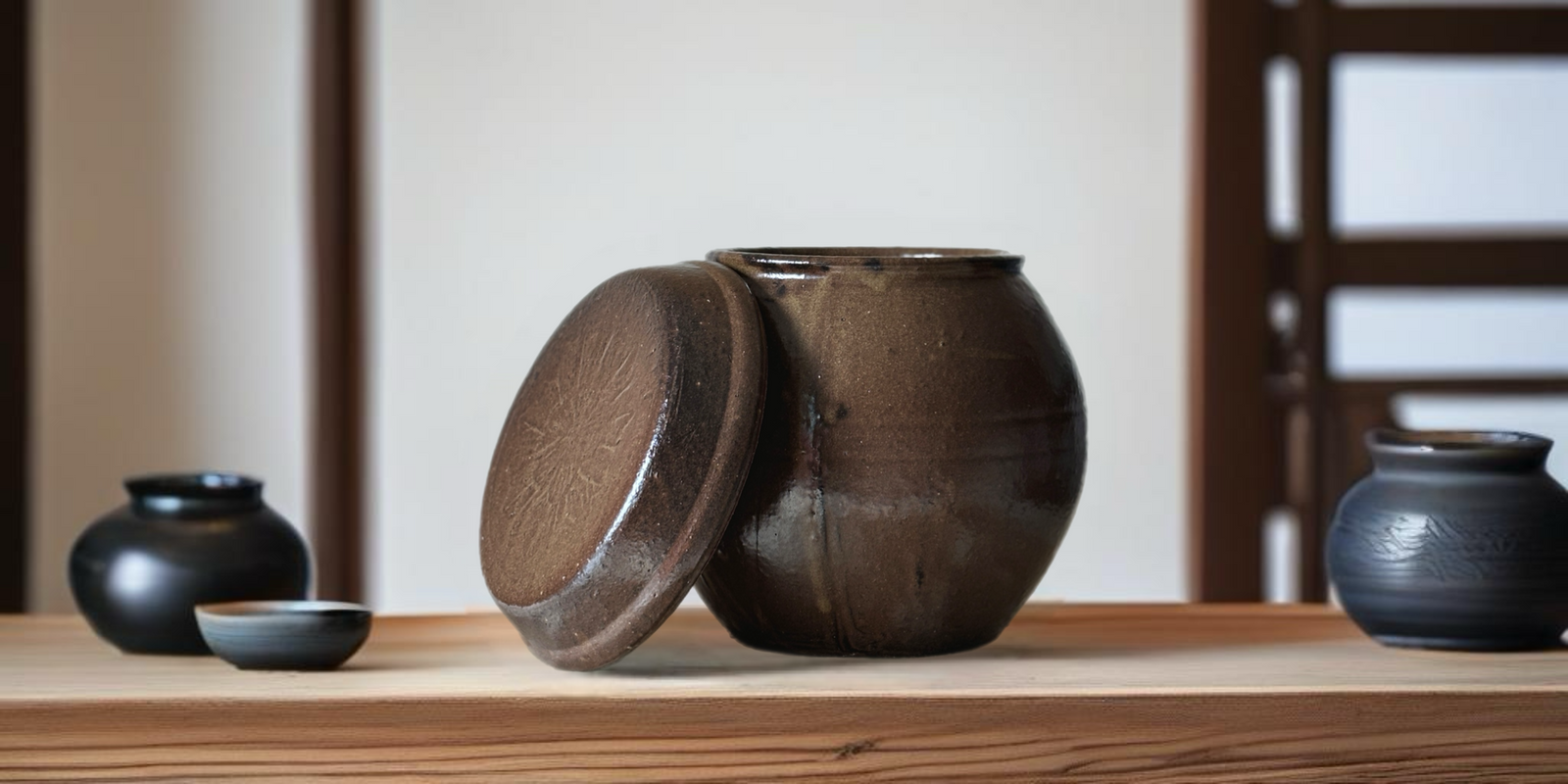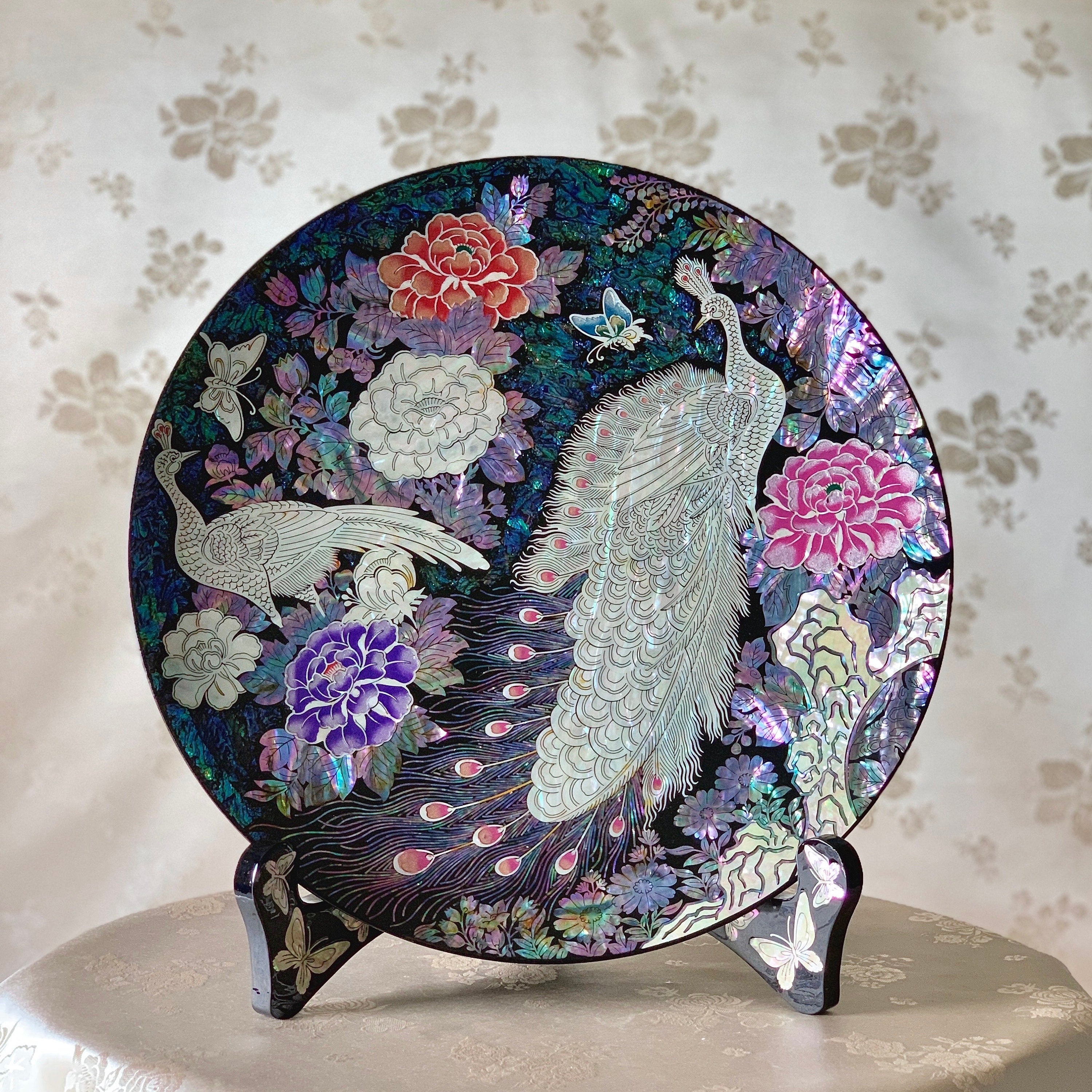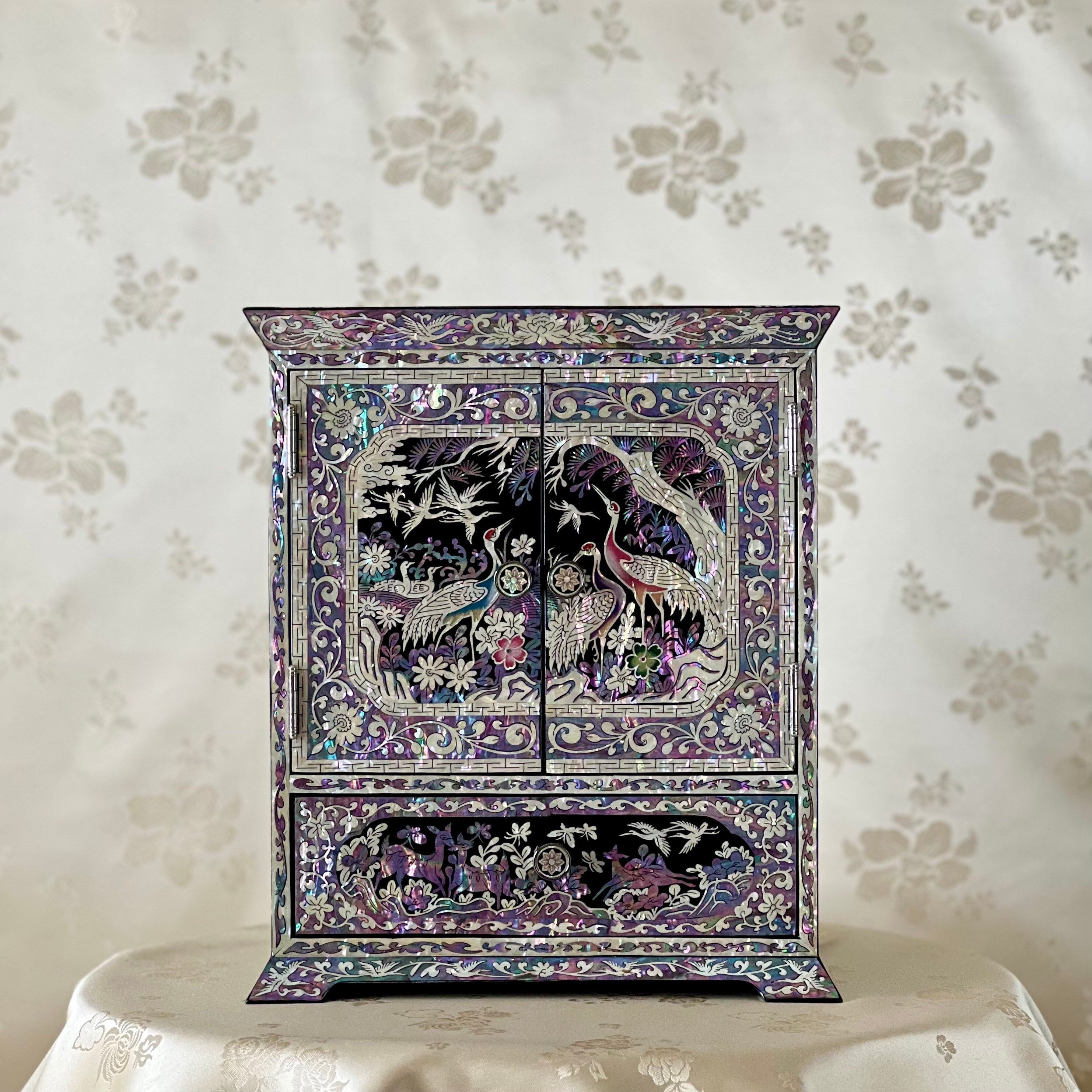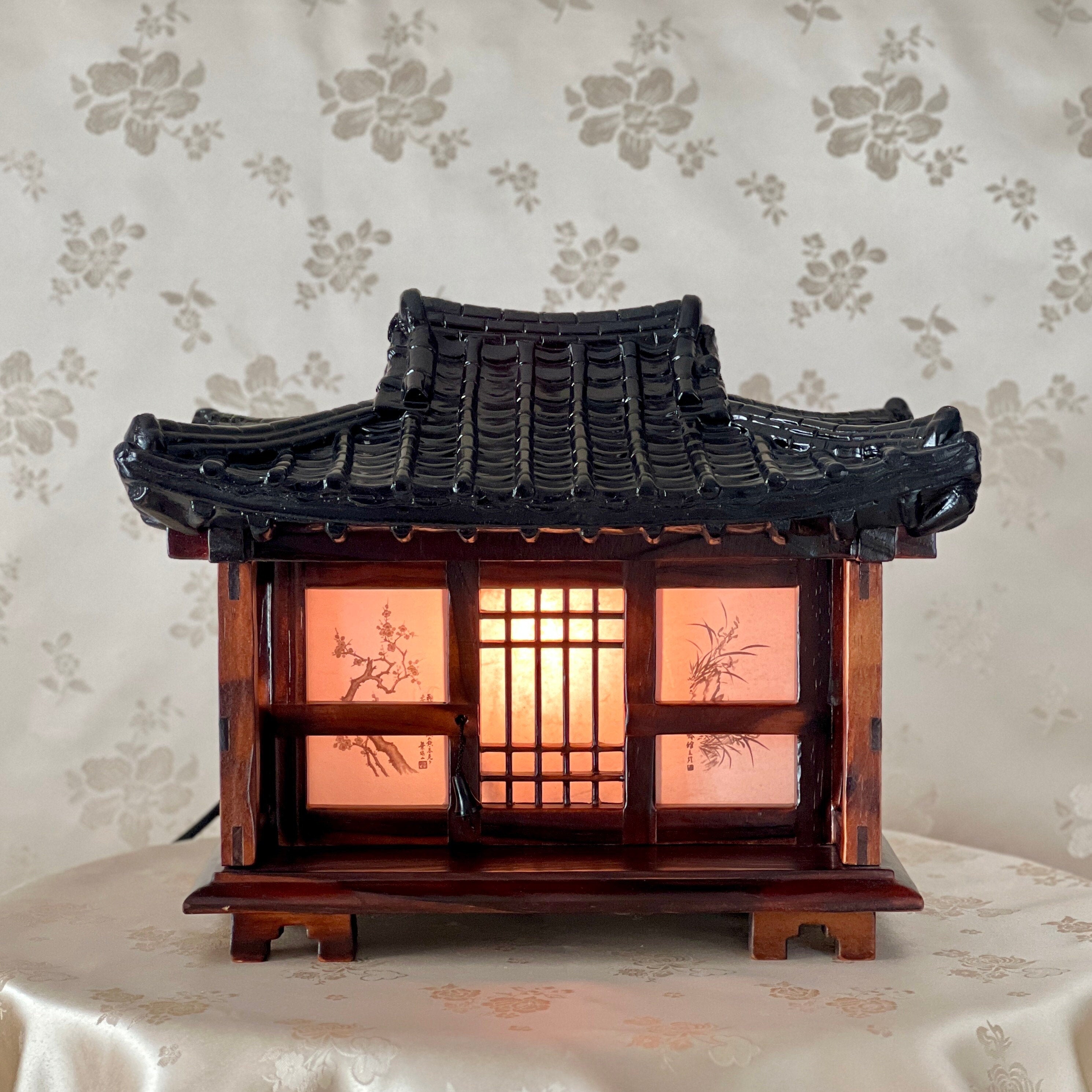韓国のチャンドクテの文化的、料理的重要性

チャンドクデ:韓国の発酵の心臓部
韓国文化では、チャンドク台は食品保存の中心的な位置を占め、何世紀にもわたって伝統的な台所で重要な役割を果たしてきました。チャンドク台は、チャンドクまたはオンギと呼ばれる大きな土器の壺を保管する高くなった石の台です。これらの壺は、キムチ、醤油 (カンジャン)、味噌 (テンジャン)、唐辛子ペースト (コチュジャン)、穀物などの主食を発酵させて保存するために不可欠です。
チャンドクという言葉は、調味料を保存したり発酵させたりするために特別に使われる、一種の大きな陶器の壺を指します。一方、オンギは、あらゆる土器の壺を指す広い意味の言葉です。チャンドク台(ハングル:장독대)は、文字通り「壺を置く場所」(チャンドク = 壺、台 = プラットフォーム)と翻訳されます。
場所と機能:
チャンドクデは伝統的にキッチンの近く、多くの場合は屋外に置かれ、日光が十分に当たり、風通しが良い場所です。これらの環境要因は発酵プロセスに不可欠で、瓶の中身が何年も新鮮で安全に食べられる状態を保ちます。瓶自体は通常、石の台の上に高く置かれ、瓶の下の適切な換気が確保され、発酵がさらに促進されます。このユニークな保管方法は、瓶内の温度を最適に保つのに役立ち、食品の品質を保つために重要です。
現代でも、チャンドク台は韓国の料理の伝統の重要な要素であり、多くの家庭では自家製の調味料や発酵食品を保存するために、この昔ながらの方法を今も使い続けています。家庭に伝統的な雰囲気を加えたい人にとって、チャンドク台は実用的な目的を果たすだけでなく、庭や屋外スペースに素朴で文化的な美しさを加えてくれます。
韓国文化では、チャンドク台は食品保存の中心的な位置を占め、何世紀にもわたって伝統的な台所で重要な役割を果たしてきました。チャンドク台は、チャンドクまたはオンギと呼ばれる大きな土器の壺を保管する高くなった石の台です。これらの壺は、キムチ、醤油 (カンジャン)、味噌 (テンジャン)、唐辛子ペースト (コチュジャン)、穀物などの主食を発酵させて保存するために不可欠です。
チャンドクという言葉は、調味料を保存したり発酵させたりするために特別に使われる、一種の大きな陶器の壺を指します。一方、オンギは、あらゆる土器の壺を指す広い意味の言葉です。チャンドク台(ハングル:장독대)は、文字通り「壺を置く場所」(チャンドク = 壺、台 = プラットフォーム)と翻訳されます。
場所と機能:
チャンドクデは伝統的にキッチンの近く、多くの場合は屋外に置かれ、日光が十分に当たり、風通しが良い場所です。これらの環境要因は発酵プロセスに不可欠で、瓶の中身が何年も新鮮で安全に食べられる状態を保ちます。瓶自体は通常、石の台の上に高く置かれ、瓶の下の適切な換気が確保され、発酵がさらに促進されます。このユニークな保管方法は、瓶内の温度を最適に保つのに役立ち、食品の品質を保つために重要です。
現代でも、チャンドク台は韓国の料理の伝統の重要な要素であり、多くの家庭では自家製の調味料や発酵食品を保存するために、この昔ながらの方法を今も使い続けています。家庭に伝統的な雰囲気を加えたい人にとって、チャンドク台は実用的な目的を果たすだけでなく、庭や屋外スペースに素朴で文化的な美しさを加えてくれます。








